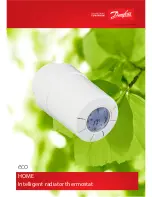
TG-2000
13
Emissivity
Emissivity is the ability of an object to emit infrared energy. Most objects or surfaces have an emissivity
value of about 0.95. Some objects, such as polished or shiny metallic surfaces, may have much lower
emissivity. Using an infrared thermometer to measure the temperature of such objects will produce
inaccurate results.
• Temperature readings will be inaccurate on highly reflective objects.
• Temperature readings will be inaccurate on objects if emissivity is not adjusted properly.
Follow masking and emissivity adjustment procedures.
Failure to observe these precautions may result in injury and can damage the unit.
Masking a Surface to Determine Emissivity
To determine the effect of emissivity on the measurement, cover the surface with masking
tape or flat black paint. (Be sure to use tape or paint that can withstand the anticipated temperature.)
The emissivity of both these materials is about 0.95. Allow time for the tape or paint to reach the tem-
perature of the material underneath. Measure the covered area and a nearby area. The readings should
be about the same. If they are not, the emissivity may affect your measurements.
Compensating for Emissivity
• If the temperature of the surface is known, adjust the emissivity until the unit agrees with the known
temperature.
• If the material of the surface is known, adjust the emissivity according to the Common Emissivities
table on the following page.
• Otherwise, mask the surface as described above. Measure temperature of the masked area with
emissivity set at 0.95. Measure temperature of unmasked surface and adjust emissivity until tem-
peratures agree. Write down emissivity value for future readings on this surface.
Содержание Greenlee TG-2000
Страница 32: ...32...














































